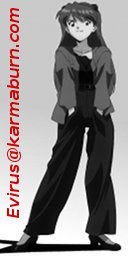16 September 2015: First Pretty Cure, Futari wa Pretty Cure Max Heart, and Splash Star
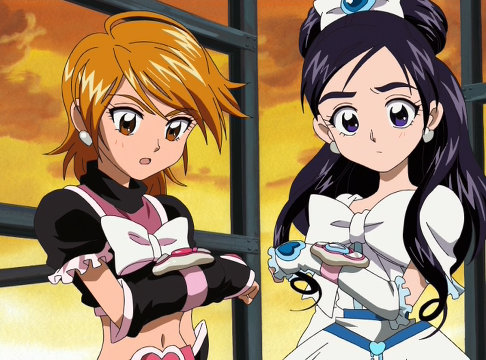
This merchandise prints money, girls. At least pretend to be excited.
I recently re-watched the original Futari wa Pretty Cure (hereinafter First Precure), Futari wa Pretty Cure Max Heart, and Futari wa Pretty Cure Splash Star. I.e., the first three years of the franchise, consisting of nearly 150 episodes plus three movies. Anyone who has been paying attention likely already knows I consider First Precure to be the best overall series of this mahou shoujo juggernaut and Splash Star to be the most underrated one. Admittedly, to some degree, much of this is due to nostalgia glasses and a not-so-subtle attempt to trumpet ground-floor-fan cred, but these first two generations of Cures really are good in ways unique to Pretty Cure as a whole—ways we're not likely to see again.
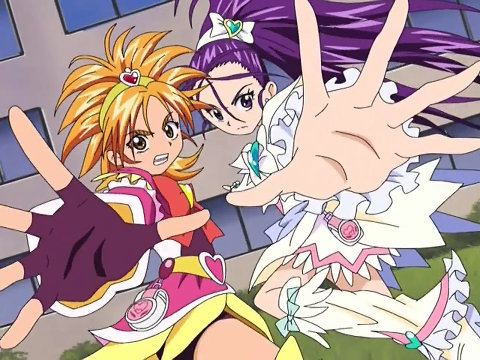
Floppy-socks generation.
It seems a little obvious to say so, but First Precure is unique in that there are only two Cures: Cure Black (Nagisa) and Cure White (Honoka). In fact, the show is really about Cure Black. It defaults to her point of view most of the time, and she also acts as the show's narrator. In any case, the viewer gets to know Cure Black and Cure White much better than any other Cure in the franchise because these two don't have to split screen time with a bunch of straphangers. (Also, the first-generation series ran for two years.) Even adding Shiny Luminous (Hikari) during the second year as a Max Heart character doesn't take too much away from Black and White. By this time, the viewer already knows Nagisa and Honoka pretty well, and it seemed with this re-watching as if Hikari had a smaller presence than I had remembered. She even rides the pine during most of the climactic end-of-series fight.

A street fight for the fate of the world.
I was previously under the impression First Precure and Max Heart relied much more on hand-to-hand beat downs and had much less beam spamming than later Precure installments. Upon re-watching the series, I have to add the caveat that this is subjectively true but not necessarily objectively so. To be honest, most of the fights in First Precure are fairly simple and somewhat short. There are a few memorable standout episodes, but from a strict blow-by-blow punch count perspective, I wouldn't be at all surprised if the current generation, Go! Princess Precure, compares quite favorably. It's true the first generation uses fewer beam attacks than their Cure kohai, acting strictly as finishers, but it's not necessarily correct to use this as a point in Black & White's favor, except to say that First Precure and Max Heart FEEL as if they are filled with more punches and kicks than the subsequent years do.
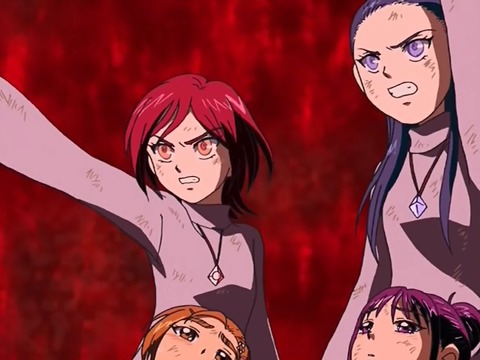
Home-field advantage.
Splash Star totally is underrated, though. I admit to dismissing the entire generation out of general principle for over three years until I watched the first Pretty Cure All Stars DX movie. Like First Precure, Splash Star benefits greatly from having only two core characters for much of its yearlong run. Even Michiru and Kaoru are absent from most of the series. As with First Precure, the smaller cast provides greater screen time for the two leads. Splash Star is also similar to First Precure in that the average fights in the series aren't actually especially ambitious from a technical perspective, and that it's the occasional memorable standout moments that shape overall impressions of the series more so than the actual number of blows exchanged. On a more positive note, Splash Star is as stylish as I remembered from my first viewing. It fills its fights with flourishes and superfluous moves executed just because they look good.
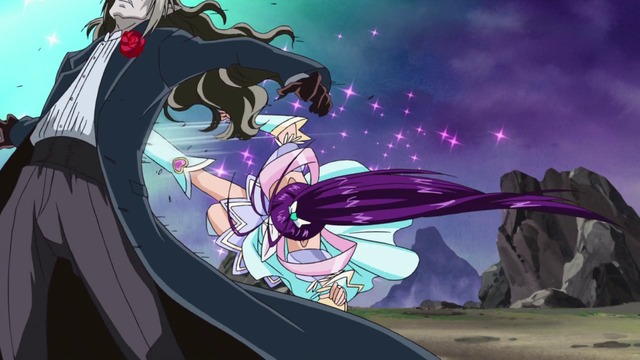
Some people need to be kicked in the back.
The first three years of Pretty Cure deserve a much more robust treatment than I've provided here. I've actually been meaning to write a comprehensive Pretty Cure treatise. Unfortunately, I've been meaning to write the damn thing for years. And well, shit, they keep coming out with additional generations every year! So let's face it, this thing ain't ever gonna get written—especially now since various other wikis and fan resources exist. Still, if you've never watched Futari wa Pretty Cure, Futari wa Pretty Cure Max Heart, or Futari wa Pretty Cure Splash Star, but still managed to read this far, I hope you're at least interested enough to watch them yourself. There's a reason why First Precure and Splash Star characters take up the first six spots in my Favorite Pretty Cure Characters list. But you don't have to take my word for it, there are only 145 episodes and three movies. The first 49 are even on Crunchyroll. Unfortunately, they're pretty janky quality and edited as well (they even edited out the best part of the episode 15 fight), so I'm afraid you're better off with a DVD-sourced fansub.
[Update: As of June 2016, Crunchyroll seems to be hosting full-length, uncut episodes of First Precure. Previously, all the episode run times were shorter (like, syndication-length for some reason) due to various cuts. For example, the OP was very obviously cut for length, and the episode 15 fight was missing the part where Cure White blocks that giant samurai's sword. A Crunchyroll employee indicated they just use what they can get, but someone fixed at least this much in the past few months. Now if only we could get the "Katuysha" song for the R1 GIRLS und PANZER release....]


